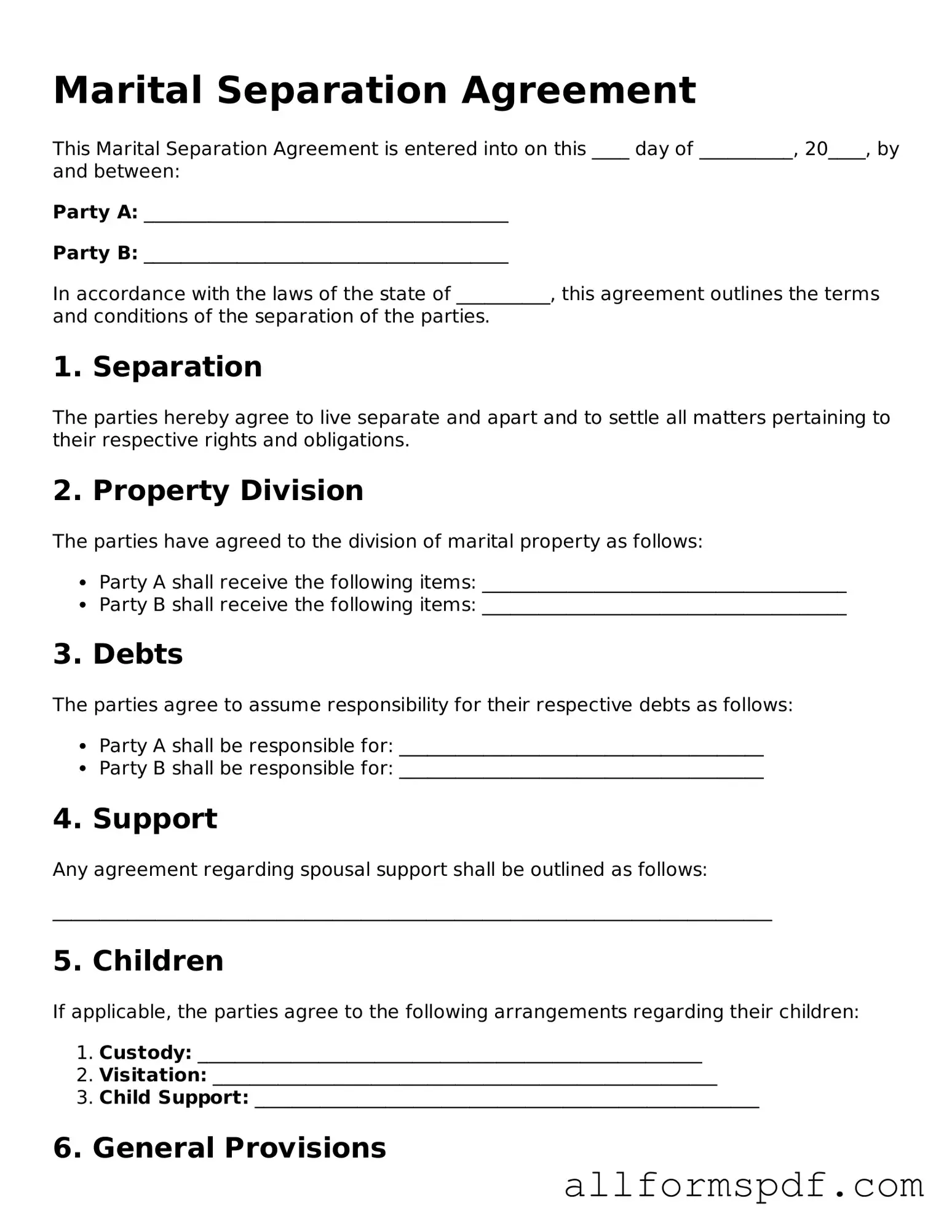Printable Marital Separation Agreement Form
A Marital Separation Agreement is a legal document that outlines the terms and conditions agreed upon by spouses who have decided to live apart but remain legally married. This form addresses various issues such as asset division, child custody, and spousal support, helping to clarify responsibilities and expectations during the separation period. By formalizing these arrangements, couples can minimize conflict and create a clearer path forward as they navigate their new circumstances.
Create My Marital Separation Agreement Now
